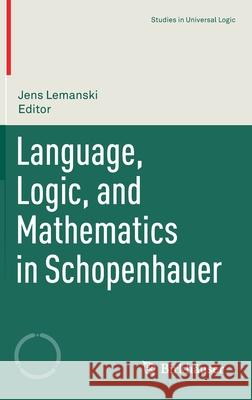Language, Logic, and Mathematics in Schopenhauer » książka
topmenu
Language, Logic, and Mathematics in Schopenhauer
ISBN-13: 9783030330897 / Angielski / Twarda / 2020 / 326 str.
Kategorie:
Kategorie BISAC:
Wydawca:
Birkhauser
Seria wydawnicza:
Język:
Angielski
ISBN-13:
9783030330897
Rok wydania:
2020
Wydanie:
2020
Numer serii:
000355068
Ilość stron:
326
Waga:
0.64 kg
Wymiary:
23.39 x 15.6 x 1.91
Oprawa:
Twarda
Wolumenów:
01
Dodatkowe informacje:
Wydanie ilustrowane











